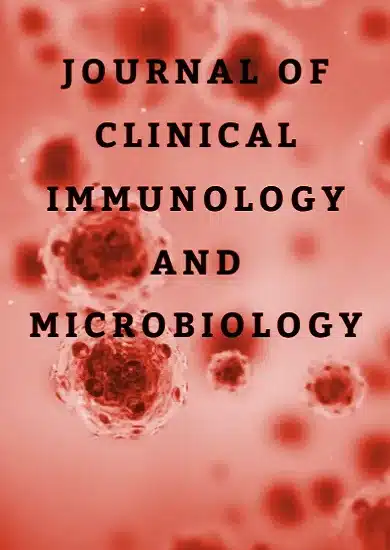Review Article | Vol. 6, Issue 2 | Journal of Clinical Immunology & Microbiology | Open Access |
Extracellular Vesicles: Role in Disease Biology
Sriparna Roy1, Sudeshna Sengupta1, Rojina Khatun1, Malavika Bhattacharya1*
1Department of Biotechnology, Techno India University, West Bengal, India
*Correspondence author: Malavika Bhattacharya, Department of Biotechnology, Techno India University, West Bengal, India; Email: [email protected]
Citation: Roy S, et al. Extracellular Vesicles: Role in Disease Biology. J Clin Immunol Microbiol. 2025;6(2):1-14.
Copyright© 2025 by Roy S, et al. All rights reserved. This is an open access article distributed under the terms of the Creative Commons Attribution License, which permits unrestricted use, distribution, and reproduction in any medium, provided the original author and source are credited.
| Received 17 April, 2025 | Accepted 05 May, 2025 | Published 12 May, 2025 |
Abstract
Membrane-enclosed structures known as Extracellular Vesicles (EVs) are effective for conducting intercellular connection. They are diverse and include apoptotic bodies, micro vesicles and exosomes. Vascular Endothelial Cells (VEs) and Mesenchymal Stem Cells (MSCs) are two examples of the diverse biological sources from which EVs are produced. Numerous illnesses, such as atherosclerosis, thromboembolism, osteoarthritis, chronic renal disease, pulmonary hypertension and periodontitis, have been linked to them. Autoimmune illnesses, nervous system’s disorders, heart diseases, respiratory syndromes, integumentary disorders are characterized by inflammation, the simultaneous deterioration of articular cartilage, joint discomfort and physiological limitations that ultimately creates disabilities. The function of extracellular vesicular cells in various illnesses and their potential medical uses will be the main topics of this review. Our discussion will also be about how EVs promote several diseases and can be used as a therapeutic biomarker. Overall, in this paper we have tried to provide a future direction to cure diseases by using Extracellular vesicles.
Keywords: Extracellular Vesicles (EVs); Mesenchymal Stem Cells (MSCs); Therapeutic Biomarkers; Disease Mechanisms; Extracellular Vesicles in Disease Progression; EV-Based Therapeutics; Future Directions in EV Research
Introduction
Cells form structures that are enclosed by membrane called Extracellular Vesicles (EVs), which are essential intercellular connection creators [1,2]. These consist of, comprising exosomes, micro vesicles and apoptotic bodies (Fig. 1) [3,4]. EVs can be created by several processes, such as the inward aborning of endosomal membranes and the outward incipient of the plasma membrane [3]. These vesicles serve crucial roles in both anatomical and pathological processes and of containing several molecular payloads, like proteins, lipids and nucleic acids [1,5]. EVs, produced by systems that enable cargo packaging from the endosomal network and plasma membrane [6]. It has been established that they can perform several biological processes, including immunology, cancer and non-synaptic brain communication [7]. They are involved in a variety of biochemical functioning, such as infectious illnesses, cancer progression and cardiovascular homeostasis [8,9]. The function of EVs in pathogen-host interactions, including the trans-kingdom transfer of proteins, metabolites and short RNAs, has been the subject of recent studies [10].
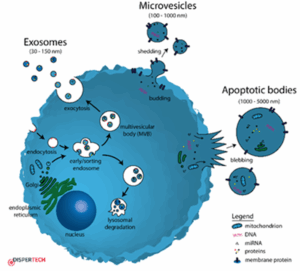
Figure 1: Extracellular vesicle formation.
According to recent research’s discovery, these extracellular vesicles have the capabilities to heal many diseases. Lung inflammation is also facilitated by EV-based communication between lung epithelial cells and stressed immune cells [11].
EVs seemed to have a therapeutic effect on the female reproductive disease, including healing damaged endometrium, preventing endometrial fibrosis, controlling immunology and inflammation and inhibiting Granulosa Cell (GC) apoptosis in the ovaries [12].
Innovative research is progressively shedding light on the many functional and clinical uses of EVs in cancer treatment and diagnosis that are still mostly unexplored. Drug resistance mechanisms will be better understood because of a fuller comprehension of EV heterogeneity, the molecular pathways that EVs use in cancer and their responsiveness to certain therapeutic treatments [13].
EVs have unquestionable functions in age-related illnesses and cellular senescence. They can also be employed in promising ways to detect and treat senescent cells. The development of this new but developing field of study is still best by a few obstacles, such as the absence of reliable and ideal fundamental models, information on the biological mechanism, an extensive age-related EV atlas and a quick attention seeking and visualizing system [14].
Beyond their conventional roles as byproducts of bacterial metabolism, Bacterial Extracellular Vesicles (BEVs) have become important players in the regulation of gut health. These vesicles serve as cargo carriers and support immune system activation, microbial balance, antimicrobial peptide release and the integrity of the physical barrier, among other elements of intestinal homeostasis [15].
A significant part of this process involves adipose tissue. Inter-organ connection between adipose tissue and the brain is mediated by adipose tissue-derived Extracellular Vesicles (EVs) and their cargo microRNAs (miRNAs). These EVs can be transported into brain by depending upon membrane proteins and are abundant in neurons, particularly in the hippocampus. EVs produced from adipose tissue in mice or diabetic individuals given a High-Fat Diet (HFD) cause notable synapse loss and cognitive impairment [16].
It has been demonstrated that EVs are consist of parasite material, trigger pro-inflammatory reactions, transmit functional microRNA and facilitate cell-to-cell communication amongst parasites in-vitro, enabling quorum sensing and nucleic acid exchange [17].
Review of Literature
According to Yusuke Y, EVs are essential for intracellular communication and the course of disease because they can transport lipids, proteins, DNA fragments and RNAs. The creation of EV-based treatments and diagnostics may result from an understanding of EV-mediated networks. Liquid biopsies and EV-targeting treatment are the subjects of recent studies.
In a review paper of Military Medical Research, it was illustrated that both Acute Respiratory Distress Syndrome (ARDS) and Acute Lung Injury (ALI) are serious lung conditions have a high death rate. There are no successful treatment approaches despite decades of investigation. The function of Extracellular Vesicles (EVs) in controlling cellular processes, such as inflammation and damage responses, has been the subject of recent research. Mesenchymal stem cell-secreted EVs can reduce inflammatory responses.
In a review paper of international journal of molecular sciences, it was found that Asherman’s syndrome (AS) and “thin” endometrium are brought on by disruptions in intrauterine adhesions, fibrosis formation and endometrial regeneration. Endometrial regeneration qualities are not restored by conventional techniques such as hormone therapy and surgical adhesiolysis. Multipotent Mesenchymal Stromal Cells (MMSCs) have demonstrated strong proliferative and regenerative capabilities in cell therapy for tissue injury. MMSCs have cytoprotective, antiapoptotic and angiogenic properties by stimulating progenitor cells and stem cells.
After much research, Extracellular Vesicles (EVs) are now thought to be a major factor in cancer. The biogenesis, chemical makeup and horizontal communication of different cancer EVs have been further studied in recent years. Large oncosomes are a new type of EV that comes from amoeboid tumour cells that migrate a lot. For detecting cancer and comprehending the variety of paracrine signalling pathways involved in malignant progression, it is essential to comprehend the biogenesis, makeup and roles of these EVs.
Extracellular Vesicles (EVs) are nano-micrometre vesicles that contain bioactive chemicals that are secreted fromvarieties of cells. Their potential as biomarkers and in cell-to-cell communication has drawn interest. Because EVs can control gene expression in recipient cells, they have demonstrated promise in the treatment of diabetes and its consequences. The medicinal potential of EVs is highlighted in current studies, which also suggest further investigation.
Extensive research on extracellular vesicles in malaria over the past ten years has demonstrated their critical involvement in immune responses, cell-cell communication, susceptibility and disease pathogenesis, highlighting areas that need more study.
Each cell types form Extracellular Vesicles (EVs), which confirms communication between cells. They fall into three categories: apoptotic bodies, micro vesicles and exosomes. EVs maintain cellular and tissue homeostasis by transporting essential cargos. However, illnesses like thrombosis may be exacerbated by their function in intercellular communication. The physiological and biochemical characteristics of EVs point to possible therapeutic applications in medication delivery and tissue regeneration.
Lipid nanoparticles called extracellular vesicles, which are secreted by living things, are essential for both the development of chronic liver disease and intercellular communication. End-stage liver diseases like cirrhosis, liver failure and cancer can occur because of these vesicles’ facilitation of communication between infectious pathogens and host cells. Developing treatment approaches may be facilitated by an understanding of their biological underpinnings.
Research on Extracellular Vesicles (EVs) has increased because of the rise in musculoskeletal disorders brought on by aging. EVs are essential for cell communication and have a function in illness, regeneration and tissue homeostasis. Induced pluripotent stem cell-derived Mesenchymal Progenitor Cells (iMPs) may be able to get around the drawbacks of Mesenchymal Stromal Cells (MSCs), which are massively used for production of EVs. There is also discussion on EVs’ therapeutic uses.
Increased pressure and resistance in the pulmonary arterial bed are hallmarks of Pulmonary Hypertension (PH), a chronic, progressive illness. Death and right heart failure may result from it. Although the exact cause of PH is unknown, extracellular vesicles (EVs) are essential for intercellular communication and have an impact on aging, inflammation, immunological response and regenerative processes. EVs have the potential to participate in disease progression pathways and serve as PH biomarkers.
- Role of Extracellular Vesicles in Acute Lung Diseases
The pathophysiology and possible therapy of acute lung illnesses, such as acute respiratory distress syndrome (ARDS) and acute lung injury (ALI), are significantly influenced by extracellular vesicles (EVs). EVs influence inflammation and the integrity of the alveolar-capillary barrier by transporting bioactive chemicals between cells [18,19].
EVs generated from mesenchymal stem cells (MSCs) promote promising disease-free effects in decreasing and healing lung damage, whereas those formed from wounded cells can worsen lung inflammation [18,20]. MSC-derived EVs offer a potentially safer substitute for cell-based therapies by replicating many of the positive effects of MSCs themselves [21]. In several acute and chronic lung conditions, these EVs can reduce inflammatory responses, encourage cell division and improve tissue regeneration [20,21].
- Therapeutic Effects of Extracellular Vesicles in Female Reproductive Diseases
Improved application potential for these conditions, as well as recurrent spontaneous abortion and endometriosis, is provided by engineered EVs [22]. EVs are essential for implantation, fertilization, folliculogenesis and embryo quality [23]. While EVs in follicular fluid, oviducts and the uterine cavity in females aid in oocyte maturation, fertilization and embryo-maternal communication, epididymosomes and prostasomes control sperm activity in the male reproductive system. EVs exhibit promise as therapeutic agents and biomarkers for reproductive diseases, providing the possibility of targeted drug delivery [24].
Multipotent Mesenchymal Stem Cells (MMSCs) are the source of EVs, which have cytoprotective, antiapoptotic and angiogenic properties and can stimulate progenitor cells and stem cells in injured tissues. In addition to being biologically active substances that control the endometrium’s functional capacity and take part in embryo implantation processes, EVs can also be viewed as a therapeutic option to the cellular approach [25]. Extracellular Vesicles (EVs) generated through Human Umbilical Mesenchymal Stem Cells (HUMSCs) have been demonstrated as capable of producing therapeutic effects on a range of illnesses and tissue damage. Through the regulation of arginine metabolism and Nitric Oxide (NO) generation, the promotion of endothelial cell proliferation and angiogenesis in-vitro and the amelioration of symptoms in PE model mice, MSC-derived EVs can ameliorate vascular endothelial damage in PE (Fig. 2) [26].
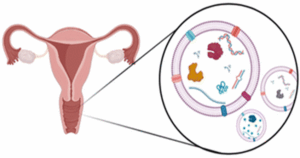
Figure 2: Extracellular vesicles in female reproductive disease.
- Extracellular Vesicles, As A Cure for Cancer
In cancer treatment, Extracellular Vesicles (EVs) have shown great promise. They are essential for the growth, metastasis and resistance to chemotherapy of tumours [27,28]. By mediating intercellular communication, EVs change the tumour microenvironment and aid in the development of cancer [29]. They are also useful for medicinal applications because of their special qualities. Because EVs may target specific cells and transport a variety of biomolecules, they can be employed as medication delivery vehicles, providing benefits over traditional treatments [27,29]. Additionally, EVs exhibit promise as biomarkers for early cancer monitoring and detection [28].
A subgroup of EVs called exosomes is essential for cellular communication and serves as a reflection of the state of cells in both healthy and diseased states. By controlling unchecked cell proliferation, immunological suppression, angiogenesis, metastasis and the emergence of pharmacological and treatment resistance, Tumour-Derived Exosomes (TEXs) have a dynamic impact on the course of ovarian cancer. Potential biomarkers for ovarian cancer can be found in a variety of bodily fluids thanks to TEXs. However, exosomes have also demonstrated encouraging potential in the treatment of ovarian cancer [30].
For diagnostic and prognosis evaluation, EVs can be used as functional biomarkers. Patients with colorectal tumours and healthy individuals have different levels of the transmembrane proteins CD147 and A33 found in faecal EVs. It is therefore a new marker that are not invasive for the prognosis and screening of colorectal cancer. A reproducible and minimally invasive technique for diagnosing and treating tumours is liquid biopsy. Easy access, stable structure and abundant information created with circulating tumour cells and circulating tumour DNA are some benefits of EVs. For the treatment of several illnesses for which there is now no viable medication, EV-based therapy may be the next-generation method of targeted drug delivery (Fig. 3) [31].
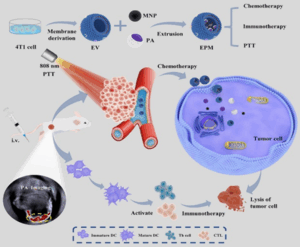
Figure 3: Tumour derived extracellular vesicle drug delivery system.
- Role of Extracellular Vesicles in Age-Related Diseases
Extracellular Vesicles (EVs) are essential for aging and cellular communication. They can exacerbate age-related illnesses and are important elements of the Senescence-Associated Secretory Phenotype (SASP). The SASP, particularly SASP-related Extracellular Vesicle (EV) signaling, is one of the hallmarks of senescence and is the primary mechanism by which aging is transmitted through paracrine and endocrine pathways. In age-related disorders and the aging milieu, EVs are effective in communicating between cells and organs. They negatively impact downstream targets for metabolism, gene expression, inflammation and immunology. Additionally, EVs derived from various donors are utilized for cell-free systems’ regeneration and rejuvenation and are potential materials and instruments for antiaging treatments [32,33]. Senescent cell-derived EVs can negatively impact downstream targets, including metabolism, gene expression, inflammation and immunology [32]. Nevertheless, EVs derived from healthy cells, especially stem cells, have promise for tissue regeneration and as a cell-free treatment for illnesses associated with aging [34]. Recent research has demonstrated EVs’ promise for both diagnosis and treatment of several age-related illnesses, including diabetes, osteoporosis, Alzheimer’s disease and cardiovascular disease. To increase efficiency and target, EVs are now being investigated as medicine carriers. As instruments for communication between cells, Extracellular Vesicles (EVs) are crucial elements for senescence-associated Secretory Phenotype (SASP) and may have pathogenic functions throughout the cellular senescence process. Furthermore, the actions of EVs are like those of their parent cells. Thus, EVs from healthy cells may have therapeutic effects, while those from sick tissues or bodily fluids may be strongly linked to the development of illnesses and represent potential biomarkers [33].
EVs are becoming more widely acknowledged as vital components in preserving bodily homeostasis, as well as viable indicators and treatment agents for aging and age-related illnesses, as research progresses [35].
- Role of Bacterial Extracellular Vesicle in Improving Gut Health
Intestinal microenvironment regulation and gut health maintenance are greatly aided by bacterial extracellular vesicles or BEVs. These microscopic particles, which are released by gut bacteria, serve as messengers between the microbiota and the host and carry a variety of chemicals. Microorganisms secrete Extracellular Vesicles (EVs), which can carry several vital substances, including antibiotics, virulence factors, HGT and defensive factors made by the host eukaryotic cells. These EVs are also essential for promoting communication between the host and bacteria. Bacterial EVs are therefore essential for preserving the health and appropriate operation of the GI tract [36].
By affecting immune system activation, barrier integrity, antimicrobial peptide secretion and microbial balance, BEVs support intestinal homeostasis. Intestinal infections, inflammatory bowel illness, metabolic dysregulation and even cancer can result from any imbalance in BEV production. BEVs produced from commensal or beneficial bacteria have been linked to gut health maintenance and can function as strong immune regulators. Additionally, they exhibit potential for upcoming therapeutic uses in tumour immunotherapy and vaccine development [37].
In the gut-microbiota, Bacterial Extracellular Vesicles (BEVs) have become promising signaling vectors for interkingdom communication which are situated far away. Most bacteria release these nanovesicles, which can directly pass the blood-brain obstruction and communicate with the brain through their tiny RNA and protein cargo. BEVs may be a contributing factor to diseases like Alzheimer’s, Parkinson’s and depression/anxiety because they are demonstrated to control brain gene expression and cause pathology at most stages of neuroinflammation and neurodegeneration. However, BEVs have inherent therapeutic qualities that could be useful for probiotic treatment. They can also be designed to serve as vaccines and medication delivery systems [38].
Beneficial bacteria-derived BEVs have the potential to function as immune regulators and have clinical uses in tumour immunotherapy and vaccine development [37]. Additionally, BEVs may be used in probiotic therapy and have therapeutic potential as drug delivery vehicles. The gut microbiota secretes lipid bilayer nanoparticles called gut bacteria-derived extracellular vesicles (GBEVs), are important mediators of communication between bacteria and hosts [38,39].
- Extracellular vesicles and diabetes
The functions of certain Extracellular Vesicles (EVs) in type 2 diabetes have garnered a lot of interest in recent years. Most cells secrete EVs, which are bilayer membrane vesicles that, through cell-to-cell transfer, can help regulate several physiological and pathological processes in-vivo. It was recently found that certain aberrant EVs might cause insulin resistance, which in turn can lead to the development of type 2 diabetes and its comorbidities. Furthermore, some EVs produced from stem/progenitor cells may find use in the treatment of type 2 diabetes [40,41].
A class of metabolic diseases known as diabetes is typified by hyperglycaemia, which can lead to potentially fatal consequences. Conventional clinical treatment usually has little effects and a long list of adverse effects, such as hypoglycaemia, obesity and liver and kidney damage. According to recent research, EVs generated by immune and stem cells could control gene expression in recipient cells, offering a treatment option for diabetes and its consequences [42]. The majority of cell types release Extracellular Vesicles (EVs), which circulate nanovesicles that contain bioactive payloads that are transported horizontally to specific cells or tissues. A growing body of research over the last ten years points to EVs as mediators of insulin resistance, inflammation, islet cell failure and other metabolic effects linked to diabetes (Fig. 4) [43].
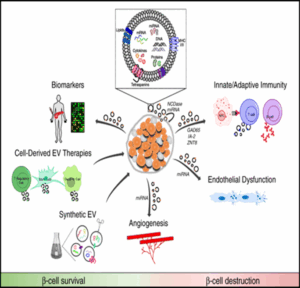
Figure 4: Extracellular vesicles in type 1 diabetes: Messengers and regulators.
- Interconnection of Extracellular Vesicles with Plasmodium
The pathophysiology of cerebral malaria, the regulation of host immunity to Plasmodium and cell-cell communication are all linked to micro-vesicles and exosomes. In-vitro and in-vivo models of cerebral malaria, inhibiting their synthesis provides protection [44]. Malaria patients with varying degrees of disease severity have significantly higher levels of circulating endothelium EVs due to elevated plasma concentrations of TNF-alpha. Both prothrombotic and proinflammatory properties are exhibited by endothelial EVs that are released from endothelial cells in cell culture. Therefore, by encouraging the extensive fibrin deposition and platelet activation seen during the fatal CM, the high levels of circulating endothelium EVs in patients with severe malaria may aid in the pathogenesis [45].
Additionally, EVs can facilitate communication between infections, vectors and hosts. From parasite adaptation to specific host niches to host resistance and the evolution and maintenance of parasite virulence and transmissibility, this inter-kingdom communication through EVs have significant evolutionary ramifications. According to current research, EVs produced from human red blood cells infected with Plasmodium mediate the parasite’s shift from an asexual to a sexual stage, which could help spread to the mosquito vector [46].
- Evolutionary Therapies of Several Diseases with Extracellular Vesicles
Specific proteins (such tenascin C and Sema4D), microRNAs (including miR-214-3p, miR-183-5p and miR-196a) and other growth factors (like bone morphogenetic protein 1 to 7 and transforming growth factor β1) are delivered to osteoblasts in bone-remodelling microenvironments by EVs, which also control bone formation. Furthermore, EVs can transport microRNAs like miR-218 and miR-148a as well as cytokines like RANK (receptor activator of nuclear factor κB) and RANKL (RANK ligand) to alter osteoclast development during bone resorption. Additionally, EVs have tailored therapeutics for disorders affecting the bones and transmit bioactive compounds. Furthermore, EVs’ bioactive compounds serve as indicators for disorders affecting the bones [47].
The discovery of EVs with miRNAs offers fresh perspectives on how different cells communicate during bone remodelling in both healthy and diseased settings. They are promising biomarkers of bone disorders because EVs may be the specific mail carriers and miRNAs may act as the hallmarks. The paracrine effect is the main mechanism by which Mesenchymal Stem Cells (MSCs) contribute to bone tissue healing, according to mounting data. Stem cell-derived EVs transfer genetic information to control stemness, self-renewal and multilineage differentiation. EVs may also replicate the features of the cells from which they arise [48].
Because of their biocompatibility in both clinical and experimental settings, EVs are essential and offer a vast therapeutic approach against a variety of inflammation-associated diseases, including autoimmune diseases, neurological disorders, cardiovascular anomalies, respiratory syndromes, integumentary disorders and respiratory disorders. They are also useful in regenerative medicine. Because they transport autoantigens, cytokines, lipid mediators, tissue-degrading enzymes and other substances, EVs are essential for both kind of immunity-innate and adaptive, including inflammation. Because they are non-cellular membranes, EVs can control function of immune call, reduce excessive inflammation and enhancetolerance immunologically [49].
By activating immune cells and presenting antigens, for instance, EVs can alter the immunological response. Some EVs have MHC-I and MHC-II and their costimulatory molecules on their surface, as was previously mentioned. Thus, EVs can transmit the information about antigen between dendritic cells as peptide-MHC complexes or entire antigens, making the naïve dendritic cells canstimulate immunological cells. EVs can conduct direct antigen presentation to T-cells in addition to this indirect method. EVs are found in numerous body fluids and have more stable content than free-circulating RNAs or proteins because their content is shielded by the EV membrane. These are the primary benefits of employing EVs as disease biomarkers. Additionally, since EV content is unique to the parent cell, separating these EVs from patient biofluids and characterizing their cargo may be a promising approach to disease monitoring and detection [50].
In addition to their antimicrobial and immune-modulatory qualities, extracellular vesicles cause receptor signaling in the receiving cell, including the transfer of pro-inflammatory receptors. Furthermore, the vesicles might systemically transport pathogenic agents. Extracellular vesicles in urine and blood can either have protective benefits or aid in the development of kidney disorders. The function of EVs in inflammation, thrombosis, immunological regulation, angiogenesis, oxidative stress, renal tubular regeneration and infection will be discussed in this review [51].
The significance of EVs in inflammatory illnesses is becoming clearer as it is discovered that most of their actions are intimately linked to the immune response. By using EV surface engineering and endow targeting moiety, EVs can be functionalized and given target specificity for use in inflammatory disease treatment. Engineered EVs are also thought to be potential nanoparticles for creating customized medicinal carriers [52].
Extracellular vesicles or EVs, have a significant role in the pathophysiology of autoimmune disorders as well as in possible therapeutic interventions. Antigen presentation is aided by EVs’ ability to carry autoimmune triggers throughout the body. Additionally, EVs may be useful in the therapy of autoimmune disorders. Because EVs are produced by a variety of cell types, they include a wide range of chemicals and, consequently, a large range of physiological consequences. EVs made from mesenchymal stem cells or dendritic cells can lessen inflammation [53].
Multiple sclerosis, rheumatoid arthritis, systemic lupus erythematosus, Sjogren’s syndrome, Type 1 diabetes and autoimmune thyroid disease are among the autoimmune disorders for which the pathophysiological function of EVs is becoming more well acknowledged. EVs are thought to be biomarkers for various illnesses [54].
In instance, matrix remodelling and mineralization, pro-angiogenic effects and immunomodulatory functions are some of the ways that EVs might support musculoskeletal tissue homeostasis, regeneration and illness. The most common source of cell for EV production in musculoskeletal applications is Mesenchymal Stromal Cells (MSCs) [55].
The musculoskeletal system is a great model for examining the role of EVs in tissue maintenance and repair, according to new research on EVs in musculoskeletal disorders [56].
Extracellular Vesicles (EVs) are crucial for controlling fate of cell ferroptosis because they act as mediators in communication between cells. There is mounting proof that cellular iron export is closely linked to EV biogenesis and secretion. Additionally, different EV sources transport different payloads to the destination cells, either activating or suppressing ferroptosis and changing the recipient cells’ phenotype. Therefore, using EVs to deliver treatments that target ferroptosis may have a lot of promise for the treatment of musculoskeletal disorders [57].
In regenerative medicine, the therapeutic potential of Extracellular Vesicles (EVs) produced from stem cells has demonstrated significant advancements. Rich in a range of bioactive compounds, EVs are crucial for cell-to-cell communication and signal transmission. They also have a significant impact on tissue regeneration and repair processes. Numerous studies have demonstrated that EVs produced from stem cells improve bone and vascular regeneration, control immunity, encourage cell proliferation and differentiation and play a growing role in the musculoskeletal system [58].
Extracellular Vesicles (EVs) are vesicles that are membrane bound and come from various liver cells. It is becoming more well acknowledged that EVs have a pathophysiological role in liver illnesses such as hepatocellular carcinoma, viral hepatitis, NAFLD and alcoholic liver disease. In recipient cells, EVs can change function and activate distinct pathways, which subsequently aid in the development, progression and pathophysiology of various liver disorders. Circulating EVs are becoming more and more recognized as possible indicators of liver disease and to track therapy outcomes. Utilizing EVs’ innate capacity to transport nucleic acids and other pharmacological payloads to liver cells may lead to EVs becoming a unique therapeutic method for liver disease modification or liver regeneration [59].
EVs originating from other cells can be released and received by liver cells and new research suggests that liver EVs are crucial in the pathophysiology of several liver illnesses, such as alcoholic liver disease, viral hepatitis, liver cancer and non-alcoholic fatty liver disease. Because of their potential as innovative treatment modalities and disease indicators for liver and other conditions, EVs have garnered a lot of attention. Many EV-associated microRNAs and proteins have been found to date to be potential biomarkers for a range of liver illnesses and various approaches to the therapeutic use of EVs are presently being investigated [60].
EVs have been linked to liver disorders and the preservation of homeostasis [61]. The pathophysiology and development of Chronic Liver Disease (CLD) may be influenced by EVs, a unique type of nanoparticles. Indeed, the involvement of EVs in virally linked CLD and Hepatocarcinoma (HCC) has been clarified by evidence acquired from recent investigations. Since viruses and the human immune system exploit EVs to cause viral-associated CLD and HCC, they have become a significant but little-understood mechanism [62].
- Extracellular Vesicles Consequently Promoting Disease
The role that extracellular Membrane Vesicles (MVs), which range in diameter from 30 to 1000 nm and have different cellular origins, play in the pathophysiology of several diseases, including: (1) Atherosclerosis; (2) Thromboembolism; (3) Osteoarthritis (OA); (4) Chronic renal disease and pulmonary hypertension; and (5) Periodontitis [63]. Extracellular vesicles have significant roles in the pathophysiology of many diseases and their significance is becoming increasingly clear. Extracellular vesicles, which include micro-vesicles and exosomes, are crucial messengers between cells and are increasingly being implicated in the development of cancer tumours, their metastases and the transmission of infectious diseases [64].
One kind of long-term inflammatory condition affecting the big arteries is atherosclerosis. The main beginning event in atherosclerosis is damage to the integrity of the artery endothelium caused by pro-inflammatory agents, such as oxidation of the aggregated Low-Density Lipoprotein (LDL) in the sub-endothelial matrix [65]. It has been proposed that endothelium EVs change the atheroprotective character of macrophages by exporting microRNA-92a to them in response to atheroprone stimuli. In fact, atherogenic circumstances such low shear stress and exposure to ox-Low Density Lipoprotein are linked to endothelial cells’ upregulation of microRNA-92a [66].
A complicated vascular condition that involves clot development and possible embolization is thromboembolism. Venous Thromboembolism (VTE) is the aggregate term for Deep Vein Thrombosis (DVT) and Pulmonary Embolism (PE) [67,68]. The pathophysiology entails the blood’s reaction to damage, which is brought on by exposure to subendothelial tissue or intravascular stimuli and results in platelet aggregation and fibrin production [69].
Acute myocardial infarction, acute stroke, acute pulmonary embolism and deep vein thrombosis are among cardiovascular events that acute thrombosis increases the risk [70]. Because they are released by active, senescent or apoptotic cells, EVs are the pathophysiology of thrombosis in both the venous and arterial systems. They may have prothrombotic properties of their own in addition to being released in reaction to established prothrombotic stimuli. Vascular and blood cells interact directly during thrombosis, but they also connect and communicate via EVs generated by the various cell types involved in blood clots development [71].
Inflammation, the slow breakdown of articular cartilage, joint pain and functional restrictions that ultimately result in disability are the hallmarks of Osteoarthritis (OA), a chronic joint disease. Extracellular Vesicles (EVs) are released by joint tissues, such as the synovium and articular cartilage and have been suggested to maintain joint homeostasis and play a role in the pathophysiology of OA [72]. Rheumatoid Arthritis (RA) and Osteoarthritis (OA) are crippling conditions that have a high morbidity rate. By transporting different proteins, microRNAs (miRNAs) and mRNAs, Extracellular Vesicles (EVs), such as exosomes and micro-vesicles, are now known to play significant roles in cell-to-cell communication. The pathophysiology of both OA and RA is probably significantly influenced by EV-derived proteins and miRNAs, which also influence cell viability and differentiation [73]. Extracellular vesicles in cartilage influence inflammation and extracellular matrix turnover in addition to facilitating cell-to-cell communication in joint tissues. Changes in cartilage extracellular matrix, including aberrant mineralization and aberrant gene expression can be facilitated by extracellular vesicles from arthritic joints [74]. EVs carry biologically active substances and changes in the number and makeup of EVs in synovial fluid are indicative of OA. Certain non-coding RNAs found in EV cargo may one day be used as early OA diagnostic biomarkers. By carrying and promoting the synthesis of inflammatory mediators and proteinases that break down cartilage, EVs may aid in the spread of inflammation and cartilage degradation [75].
Increased pressure and resistance in the pulmonary arterial bed are the hallmarks of several disorders together referred to as Pulmonary Hypertension (PH). EVs affect immune response, inflammation, embryogenesis, aging and regenerative processes by their involvement in intercellular communication. They do, in fact, carry lipids, cytokines, chemokines, RNA, miRNA and other molecules that are physiologically active [76]. Because extracellular vesicles are present in readily accessible bodily fluids and can be released in response to multiple stimuli from nearly all cells, including those of the cardiovascular system, they may be a biomarker of the progression of cardiovascular diseases like hypertension. Renal physiology depends on cell-to-cell communication in the kidney and EVs are important components of this process. These mediate various biological processes, including glomerular damage, apoptosis, inflammation, fibrosis, dedifferentiation, proximal-to-distal signalling, kidney growth, ion transport regulation and immunological suppression. Hypertension-mediated renal disease is caused by changes in the glomerulus, tubule-interstitial space and arteries. This might result in a decrease in the glomerular filtration rate or the start of albuminuria [77].
35% of adults have periodontitis, a chronic inflammatory disease of the tissues that support teeth. Suppuration, tooth movement, bleeding and gum redness and swelling are signs of the condition [78]. According to the research that is currently available, these EVs may have both beneficial and detrimental impacts on the pathophysiology of periodontal disease and treatment strategies [79]. By directly infecting periodontal tissue or releasing bacterial Extracellular Vesicles (EVs) and other virulence factors like Lipopolysaccharide (LPS) and endotoxins, keystone pathogens cause rupture of the tissue and aid in the bacterial immune system’s escape [80].
Extracellular Vesicles in Disease: Future Research Directions
It is anticipated that advancements in the techniques now employed for EV isolation and characterisation will enable a more thorough analysis of EV biogenesis and advance knowledge of their composition and functional characteristics. Every technique has advantages and disadvantages and choosing one isolation method over another is a complex issue. Therefore, it is worthwhile to think about optimizing specific techniques to, for instance, increase detection limits and resolution [81].
Characterizing the composition of EVs must be thorough, simple and affordable to be used as therapeutic tools in a clinical setting. EVs are excellent biomarkers for diagnosis and prognosis and developmental tools for theragnosis in a personalized medicine-based strategy [82].
Cardiovascular cells create EVs that can spread to other cell types and alter the expression of proteins and RNA, which can have important functional repercussions later. Functional alterations that have been documented thus far seem to be both beneficial and harmful and they might be crucial to the pathophysiology of illness or normal physiology. EVs offer an appealing target for possible treatments and usage as novel biomarkers, regardless of whether the observed consequences of EV transfer result in good or negative outcomes. Characterizing the EVs that the cardiovascular system’s constituent parts release both normally and during stress could reveal new intercellular signalling pathways. We might be at the beginning of a new era of mechanistic understanding of heart disease as efforts to carry out these endeavours pick up stream [82].
Conclusion
According to the study’s findings, EVs are crucial for intercellular communication and have significant effects on several biological functions. They can be employed as drug delivery systems and biomarkers and they offer therapeutic potential. The study concludes that EVs are important in several illnesses, such as liver diseases, autoimmune diseases, bone problems and malaria. They may also find use as therapeutics in regenerative medicine and as disease biomarkers. EVs offer promise as biomarkers and therapeutic agents and are significant participants in a few biological processes and illnesses. To completely comprehend the role of EVs in disease and to create novel approaches to disease detection and therapy, more research is required.
Conflict of Interest
The authors have declared no conflict of interest.
Acknowledgement
I would like to thank Techno India University’s Chancellor for giving me the assistance I needed to complete the current project. Additionally, I want to thank my colleagues for their insightful comments, conversations and advice, all of which have improved my ideas and bolstered my arguments.
References
- Yusuke Y. Role of extracellular vesicles in disease: A novel tool for understanding disease mechanism? Proc Annu Meet Jpn Pharmacol Soc. 2022.
- Candelario KM, Steindler DA. The role of extracellular vesicles in the progression of neurodegenerative disease and cancer. Trends Mol Med. 2014;20(7):368-74.
- Abels ER, Breakefield XO. Introduction to extracellular vesicles: biogenesis, RNA cargo selection, content, release and uptake. Cell Mol Neurobiol. 2016;36:301-12.
- Petrovčíková E, Vičíková K, Leksa V. Extracellular vesicles – biogenesis, composition, function, uptake and therapeutic applications. Biologia (Bratisl). 2018;73:437-48.
- Gézsi A, Kovács ÁF, Visnovitz T, Buzás EI. Systems biology approaches to investigating the roles of extracellular vesicles in human diseases. Exp Mol Med. 2019;51.
- Raposo G, Stahl P. Extracellular vesicles – on the cusp of a new language in the biological sciences. Extracell Vesicles Circ Nucleic Acids. 2023;4:240-54.
- Simeone P, Bologna G, Lanuti P, Pierdomenico L, Guagnano MT, Pieragostino D, et al. Extracellular vesicles as signaling mediators and disease biomarkers across biological barriers. Int J Mol Sci. 2020;21.
- Hutcheson JD, Aikawa E. Extracellular vesicles in cardiovascular homeostasis and disease. Curr Opin Cardiol. 2018;33:290-7.
- Yoon YJ, Kim OY, Gho YS. Extracellular vesicles as emerging intercellular communicasomes. BMB Rep. 2014;47:531-539. doi:10.5483/BMBRep.2014.47.10.164
- Fang Y, Wang Z, Liu X, Tyler BM. Biogenesis and biological functions of extracellular vesicles in cellular and organismal communication with microbes. Front Microbiol. 2022;13
- Hu Q, Zhang S, Yang Y, Yao JQ, Tang WF, Lyon CJ, et al. Extracellular vesicles in the pathogenesis and treatment of acute lung injury. Mil Med Res. 2022;9(1):61.
- Liao Z, Liu C, Wang L, Sui C, Zhang H. Therapeutic role of mesenchymal stem cell-derived extracellular vesicles in female reproductive diseases. Front Endocrinol (Lausanne). 2021;12:665645.
- Minciacchi VR, Freeman MR, Di Vizio D. Extracellular vesicles in cancer: Exosomes, microvesicles and the emerging role of large oncosomes. Semin Cell Dev Biol. 2015;40:41-51.
- Yin Y, Chen H, Wang Y, Zhang L, Wang X. Roles of extracellular vesicles in the aging microenvironment and age-related diseases. J Extracell Vesicles. 2021;10(12):e12154.
- Sun D, Chen P, Xi Y, Sheng J. From trash to treasure: The role of bacterial extracellular vesicles in gut health and disease. Front Immunol. 2023;14:1274295.
- Wang J, Li L, Zhang Z, Zhang X, Zhu Y, Zhang C, et al. Extracellular vesicles mediate the communication of adipose tissue with brain and promote cognitive impairment associated with insulin resistance. Cell Metab. 2022;34(9):1264-79..
- Sampaio NG, Cheng L, Eriksson EM. The role of extracellular vesicles in malaria biology and pathogenesis. Malar J. 2017;16(1):245.
- Zhou L, Luo H, Lee JW. Role of extracellular vesicles in lung diseases. Chin Med J (Engl). 2022;135(15):1765-80.
- Esquivel-Ruiz S, González-Rodríguez P, Lorente JA, Pérez-Vizcaino F, Herrero R, Moreno L. Extracellular vesicles and alveolar epithelial-capillary barrier disruption in acute respiratory distress syndrome: pathophysiological role and therapeutic potential. Front Physiol. 2021;12:752287. doi:10.3389/fphys.2021.752287.
- Hu Q, Zhang S, Yang Y, Yao J, Tang W, Lyon CJ, et al. Extracellular vesicles in the pathogenesis and treatment of acute lung injury. Mil Med Res. 2022;9:61. doi:10.1186/s40779-022-00417-9.
- Worthington EN, Hagood JS. Therapeutic use of extracellular vesicles for acute and chronic lung disease. Int J Mol Sci. 2020;21(7):2318. doi:10.3390/ijms21072318.
- Zhang M, Xing J, Zhao S, Chen H, Yin X, Zhu X. Engineered extracellular vesicles in female reproductive disorders. Biomed Pharmacother. 2023;166:115284. doi:10.1016/j.biopha.2023.115284.
- Machtinger R, Baccarelli AA, Wu H. Extracellular vesicles and female reproduction. J Assist Reprod Genet. 2021;38(3):549-57.
- Simón C, Greening DW, Bolumar D, Balaguer N, Salamonsen LA, Vilella F. Extracellular vesicles in human reproduction in health and disease. Endocr Rev. 2018;39(3):292-332.
- Tabeeva G, Silachev D, Vishnyakova P, Asaturova A, Fatkhudinov T, Smetnik A, et al. The therapeutic potential of multipotent mesenchymal stromal cell-derived extracellular vesicles in endometrial regeneration. Int J Mol Sci. 2023;24(11):9431.
- Yu Z, Zhang W, Wang Y, Gao M, Zhang M, Yao D, et al. Extracellular vesicles derived from human umbilical cord MSC improve vascular endothelial function in in-vitro and in-vivo models of preeclampsia through activating arginine metabolism. Mol Pharm. 2023;20(12):6429-40.
- Chitti SV, Nedeva C, Manickam R, Fonseka P, Mathivanan S. Extracellular vesicles as drug targets and delivery vehicles for cancer therapy. Pharmaceutics. 2022;14(12):2822.
- Soltész B, Buglyó G, Németh N, Szilágyi M, Pös O, Szemeš T, et al. The role of exosomes in cancer progression. Int J Mol Sci. 2021;23(1):27.
- Stavrou A, Ortiz A. Extracellular vesicles: A novel tool in nanomedicine and cancer treatment. Cancers (Basel). 2022;14(1):27.
- Mukherjee S, Nag S, Mukerjee N, Maitra S, Muthusamy R, Fuloria NK, et al. Unlocking exosome-based theragnostic signatures: deciphering secrets of ovarian cancer metastasis. ACS Omega. 2023;8(40):36614-27.
- Wei YN, Yan CY, Zhao ML, Zhao XH. The role and application of vesicles in triple-negative breast cancer. Opportunities and challenges. Mol Ther Oncolytics. 2023;31:100752.
- Yin Y, Chen H, Wang Y, Zhang L, Wang X. Roles of extracellular vesicles in the aging microenvironment and age‐related diseases. J Extracell Vesicles. 2021;10.
- Sun Z, Hou X, Zhang J, Li J, Wu P, Yan L, et al. Diagnostic and therapeutic roles of extracellular vesicles in aging-related diseases. Oxid Med Cell Longev. 2022;2022.
- Sanz-Ros J, Mas-Bargues C, Romero-Garcia N, Huete-Acevedo J, Dromant M, Borrás C. Therapeutic potential of extracellular vesicles in aging and age-related diseases. Int J Mol Sci. 2022;23.
- Mas-Bargues C, Alique M. Extracellular vesicles as “Very Important Particles” (VIPs) in aging. Int J Mol Sci. 2023;24.
- Tian C, Yang M, Xu H, Zhu M, Zhang Y, Yao J, et al. Emerging role of bacterial outer membrane vesicle in gastrointestinal tract. Gut Pathog. 2023;15.
- Sun D, Chen P, Xi Y, Sheng J. From trash to treasure: The role of bacterial extracellular vesicles in gut health and disease. Front Immunol. 2023;14.
- Pirolli NH, Bentley WE, Jay SM. Bacterial extracellular vesicles and the gut-microbiota brain axis: emerging roles in communication and potential as therapeutics. Adv Biol. 2021;e2000540.
- Liang X, Dai N, Sheng K, Lu H, Wang J, Chen L, et al. Gut bacterial extracellular vesicles: important players in regulating intestinal microenvironment. Gut Microbes. 2022;14.
- Zhou F, Huang L, Qu S, Chao R, Yang C, Jiang Z, et al. The emerging roles of extracellular vesicles in diabetes and diabetic complications. Clin Chim Acta. 2019.
- Xiao Y, Zheng L, Zou X, Wang J, Zhong J, Zhong T. Extracellular vesicles in type 2 diabetes mellitus: key roles in pathogenesis, complications and therapy. J Extracell Vesicles. 2019;8.
- Hu W, Song X, Yu H, Sun J, Zhao Y. Therapeutic potentials of extracellular vesicles for the treatment of diabetes and diabetic complications. Int J Mol Sci. 2020;21.
- Javeed N. Shedding perspective on extracellular vesicle biology in diabetes and associated metabolic syndromes. Endocrinology. 2019;160(2):399-408.
- Debs S, Cohen A, Hosseini-Beheshti E, Chimini G, Hunt NH, Grau GE. Interplay of extracellular vesicles and other players in cerebral malaria pathogenesis. Biochim Biophys Acta Gen Subj. 2019;1863(2):325-31.
- Babatunde KA, Subramanian BY, Ahouidi AD, Martinez Murillo PA, Walch M, Mantel P. Role of extracellular vesicles in cellular cross talk in malaria. Front Immunol. 2020;11.
- Correa R, Caballero Z, De León LF, Spadafora C. Extracellular vesicles could carry an evolutionary footprint in interkingdom communication. Front Cell Infect Microbiol. 2020;10.
- Liu M, Sun Y, Zhang Q. Emerging role of extracellular vesicles in bone remodelling. J Dent Res. 2018;97:859-868.
- Huang X, Xiong X, Liu J, Zhao Z, Cen X. MicroRNAs-containing extracellular vesicles in bone remodelling: an emerging frontier. Life Sci. 2020;254:117809.
- Das K, Paul S, Mukherjee T, Ghosh A, Sharma A, Shankar P, et al. Beyond macromolecules: Extracellular vesicles as regulators of inflammatory diseases. Cells. 2023;12. https://doi.org/10.3390/cells12151963
- Valter M, Verstockt S, Ferreiro JA, Cleynen I. Extracellular vesicles in inflammatory bowel disease: small particles, big players. J Crohns Colitis. 2020. https://doi.org/10.1093/ecco-jcc/jjaa179
- Karpman D, Tontanahal A. Extracellular vesicles in renal inflammatory and infectious diseases. Free Radic Biol Med. 2021.
- Hwang HS, Kim H, Han G, Lee JW, Kim K, Kwon IC, et al. Extracellular vesicles as potential therapeutics for inflammatory diseases. Int J Mol Sci. 2021;22. https://doi.org/10.3390/ijms22115487
- Lu M, DiBernardo E, Parks E, Fox H, Zheng S, Wayne EC. The role of extracellular vesicles in the pathogenesis and treatment of autoimmune disorders. Front Immunol. 2021;12.
- Wu W, Song S, Zhang Y, Li X. Role of extracellular vesicles in autoimmune pathogenesis. Front Immunol. 2020;11. https://doi.org/10.3389/fimmu.2020.579043
- Herrmann M, Diederichs S, Melnik S, Riegger J, Trivanović D, Li S, et al. Extracellular vesicles in musculoskeletal pathologies and regeneration. Front Bioeng Biotechnol. 2020;8.
- Murphy C, Withrow J, Hunter M, Liu Y, Tang YL, Fulzele S, et al. Emerging role of extracellular vesicles in musculoskeletal diseases. Mol Aspects Med. 2017;60:123-8.
- Liao Z, Tong B, Ou Z, Wei J, Lei M, Yang C. The role of extracellular vesicles in iron homeostasis and ferroptosis: Focus on musculoskeletal diseases. Traffic. 2023;24:384-96.
- Li Z, Hou D, Tang Z, Xiong L, Yan Y. The potential role of stem cells-derived extracellular vesicles in the treatment of musculoskeletal system diseases. Cell Biol Int. 2023;48:237-52.
- Szabo G, Momen-Heravi F. Extracellular vesicles in liver disease and potential as biomarkers and therapeutic targets. Nat Rev Gastroenterol Hepatol. 2017;14:455-66.
- Deng F, Magee N, Zhang Y. Decoding the role of extracellular vesicles in liver diseases. Liver Res. 2017;1(3):147-55.
- Kostallari E, Valainathan SR, Biquard L, Shah VH, Rautou P. Role of extracellular vesicles in liver diseases and their therapeutic potential. Adv Drug Deliv Rev. 2021.
- Lim HK, Jeffrey GP, Ramm GA, Soekmadji C. Pathogenesis of viral hepatitis-induced chronic liver disease:R of extracellular vesicles. Front Cell Infect Microbiol. 2020;10:587628.
- Anderson HC, Mulhall D, Garimella R. Role of extracellular membrane vesicles in the pathogenesis of various diseases, including cancer, renal diseases, atherosclerosis and arthritis. Lab Invest. 2010;90:1549-57.
- Inal JM, Fairbrother UL, Heugh S. Micro-vesiculation and disease. Biochem Soc Trans. 2013;41(1):237-40.
- Yin M, Loyer X, Boulanger CM. Extracellular vesicles as new pharmacological targets to treat atherosclerosis. Eur J Pharmacol. 2015;763(Pt A):90-103.
- Coly P, Boulanger CM. Role of extracellular vesicles in atherosclerosis: An update. J Leukoc Biol. 2021;111:51-62.
- Blann A, Lip GY. Venous thromboembolism. BMJ. 2006;332:215-9.
- Phillippe HM. Overview of venous thromboembolism. Am J Manag Care. 2017;23(20 Suppl):S376-S82.
- Mustard JF, Packham MA. Thromboembolism: A manifestation of the response of blood to injury. Circulation. 1970;42:1-21.
- He Y, Wu Q. The effect of extracellular vesicles on thrombosis. J Cardiovasc Transl Res. 2022;16:682-97.
- Zifkos K, Dubois C, Schäfer K. Extracellular vesicles and thrombosis: Update on the clinical and experimental evidence. Int J Mol Sci. 2021;22:9317.
- Mustonen A, Nieminen P. Extracellular vesicles and their potential significance in the pathogenesis and treatment of osteoarthritis. Pharmaceuticals (Basel). 2021;14:315.
- Withrow J, Murphy C, Liu Y, Hunter M, Fulzele S, Hamrick MW. Extracellular vesicles in the pathogenesis of rheumatoid arthritis and osteoarthritis. Arthritis Res Ther. 2016;18:286.
- Miyaki S, Lotz MK. Extracellular vesicles in cartilage homeostasis and osteoarthritis. Curr Opin Rheumatol. 2018;30:129-35.
- Conti M, Minniti M, Tiné M, De Francesco M, Gaeta R, Nieri D, et al. Extracellular vesicles in pulmonary hypertension: A dangerous liaison? Biology (Basel). 2023;12:1099.
- Martinez-Arroyo O, Ortega A, Redón J, Cortes R. Therapeutic potential of extracellular vesicles in hypertension-associated kidney disease. Hypertension. 2021;77:28-38.
- van Winkelhoff AJ, Winkel EG, Vandenbroucke-Grauls CM. Periodontitis: A hidden chronic infection. Ned Tijdschr Geneeskd. 2001;145(12):557-63.
- Wang J, Liu C, Cutler J, Ivanovski S, Lee RS, Han P. Microbial- and host immune cell-derived extracellular vesicles in the pathogenesis and therapy of periodontitis: A narrative review. J Periodontal Res. 2024.
- Jiang Y, Chen Y, Ge L, Wang L, Wang L, Pathak JL. Multi-prospects of bacterial extracellular vesicles in immune modulation, inflammation regulation and periodontitis treatment. Nano Today. 2024.
- de Sousa KP, Rossi IV, Abdullahi M, Ramirez MI, Stratton D, Inal JM. Isolation and characterization of extracellular vesicles and future directions in diagnosis and therapy. Wiley Interdiscip Rev Nanomed Nanobiotechnol. 2022;15:e1835.
- Malloci M, Perdomo L, Veerasamy M, Andriantsitohaina R, Simard G, Martinez MC. Extracellular vesicles: mechanisms in human health and disease. Antioxid Redox Signal. 2019;30(6):813-56.
- Danielson KM, Das S. Extracellular vesicles in heart disease: Excitement for the future? Exosomes Microvesicles. 2014;2:10.5772/58390.
Author Info
Sriparna Roy1, Sudeshna Sengupta1, Rojina Khatun1, Malavika Bhattacharya1*
1Department of Biotechnology, Techno India University, West Bengal, India
*Correspondence author: Malavika Bhattacharya, Department of Biotechnology, Techno India University, West Bengal, India; Email: [email protected]
Copyright
Sriparna Roy1, Sudeshna Sengupta1, Rojina Khatun1, Malavika Bhattacharya1*
1Department of Biotechnology, Techno India University, West Bengal, India
*Correspondence author: Malavika Bhattacharya, Department of Biotechnology, Techno India University, West Bengal, India; Email: [email protected]
Copyright© 2025 by Roy S, et al. All rights reserved. This is an open access article distributed under the terms of the Creative Commons Attribution License, which permits unrestricted use, distribution, and reproduction in any medium, provided the original author and source are credited.
Citation
Citation: Roy S, et al. Extracellular Vesicles: Role in Disease Biology. J Clin Immunol Microbiol. 2025;6(2):1-14.

